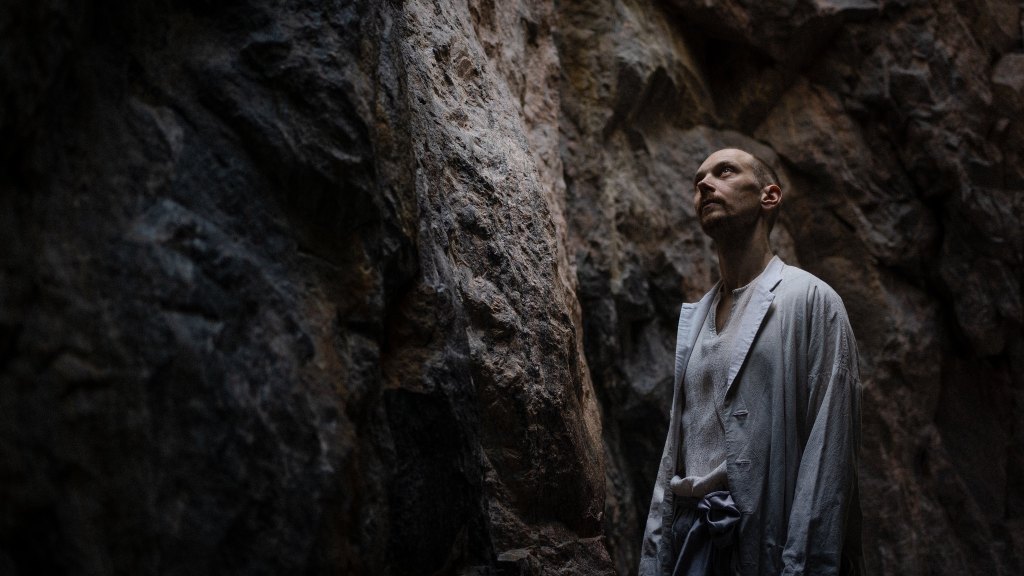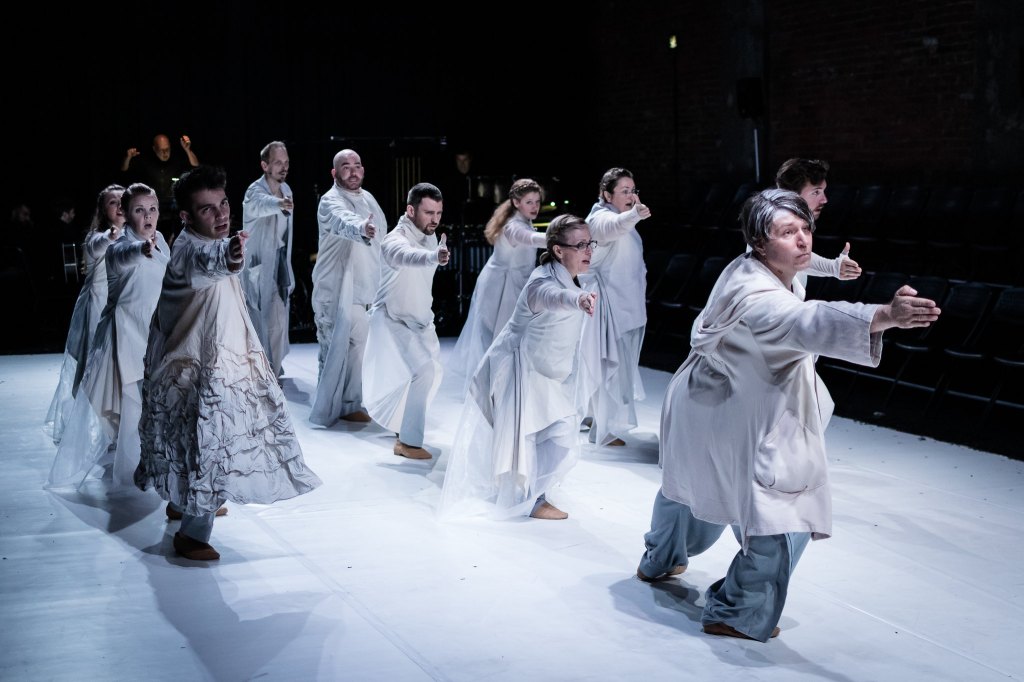
Although seventy years have passed since Harry Martinson began writing his epic science fiction poem Aniara. En revy om människan i tid och rum (1953-56), its key themes of extinction, nuclear holocaust, artificial intelligence and colonization of Mars sound as acute as ever. Unfolding underneath, there is the archetypal idea of a strayed quest – a myth reiterated throughout time and space, as it were.
Given its dramatic potential, it is no wonder that Aniara has been transcribed for various other media over the years, starting with the 1959 operatic adaptation by Karl-Birger Blomdahl, setting a libretto by Erik Lindegren, followed by several forays into film, radio and song. Coming full circle, Aniara: Fragments of time and space (2019), a collaborative music theater rendition by Robert Maggio and Dan Henriksson – composer and librettist – appears as the latest in the series.
A joint feature between Philadelphia-based choir The Crossing, Donald Nally, conductor, and Henriksson’s Helsinki-based theater group Klockriketeatern, Fragments of time and space was given its first series of performances in the summer and fall of 2019. This week, the production returned to the stage at the Baltic Sea Festival in Stockholm, followed by Friday evening’s performance at Temppeliaukio Church in Helsinki.
The circa ninety-minute narrative arch of Aniara is divided into three parts, bookended by a prologue and an epilogue. In The Spaceship Aniara, the vessel takes off from a dying Earth and gets thrown permanently off course, and is toward the constellation of Lyra, forever. The ship’s self-accumulating AI is introduced in Mima, where her visions reveal the destruction of earthly civilization in nuclear annihilation, leading her own death of grief and guilt. In the concluding Fragments, disruption and desperation prevail onboard. However, found in a forgotten chamber, Crowd of Thoughts may provide some answers. Here, the narrative cuts off, and Aniara signs out with a closing meditation and a vision of Nirvana’s current.
Written for SATB choir and an ensemble of cello, guitar, clarinet and two percussion, Maggio’s score is woven together from meditative – perhaps one could say post-minimalist – choral numbers of madrigal-like layered clarity and interlocked instrumental tapestries of absorbing texture and color. Mirroring each other, the vocal and instrumental groups provide the drama with sonic tableaux of vivid evocation and acute commentary.
Rooted in repetition and gradual permutation, each musical number establishes its signature sound, unfolding around its core in focused manner. The dramatic arch is thus wrought of subtle juxtapositions in harmony, mood and texture between the movements – interconnected in chain-like manner – giving rise to fragmentary but not disjointed auditory sequence.
Performed with virtuoso buoyancy and pristine clarity by The Crossing under Nally, the choral parts were rendered with scintillating harmonic beauty at Temppeliaukio church. Similarly, the instrumental quintet – Iida Sinivalko, cello, Jarmo Julkunen, guitar, Markku Luuppala, clarinet, Magdalena Meitzner and Pekka Saarikorpi, percussion – delivered a swift reading, sounding out their intricate sonic networks with focus and commitment.

Interchanges between the vocal and instrumental Greek chorus and the three dramatis personae – portrayed by Carl Alm, Matti Raita and Antti Silvennoinen – yielded to captivating hall of mirrors. In context of the musical score, the spoken scenes, often conceived as fragments – some of them more extended than others – appear in the manner of freely associated memories. Theater-wise their construction was often quite straightforward, even matter-of-factly, inviting the audience to project their emotional subtext to the stage imagery.
Visually well adapted to the unique ambiance of the Temppeliaukio Church, the production was clad in refined garments by Joonas Tikkanen’s lighting and video design. Erika Turunen’s costumes sat well with the stage appeal, contributing to the overall visual language of the production in organic manner. Regarding the full aural experience, the performers were well served by Paul Vazquez’s delicate sound design.
An extensive meditation instead of full-blown music drama, Aniara: Fragments of time and space calls forth reflective audience to complete its many trajectories. As the crowded-out church benches demonstrated, these meditative space-time continuums are dearly desired.
Aniara: Fragments of time and space (2019) for SATB choir, actors and ensemble, based on Harry Martinson’s Aniara. En revy om människan i tid och rum (1953-56)
Robert Maggio, composer
Dan Henriksson, librettist
The Crossing
Donald Nally, conductor
Klockriketeatern
Dan Henriksson, Head of Theater
Carl Alm, actor (Chief Astronomer and narrator)
Matti Raita, actor (Mimaroben)
Antti Silvennoinen, choreographer and dance (Mima)
Iida Sinivalko, cello
Jarmo Julkunen, guitar
Markku Luuppala, clarinet
Magdalena Meitzner, percussion
Pekka Saarikorpi, percussion
Joonas Tikkanen, scenography, lighting design and video design
Paul Vazquez, sound design
Erika Turunen, costume design
Temppeliaukio Church, Helsinki, Finland
Friday 1 September, 8 pm
© Jari Kallio
Leave a comment